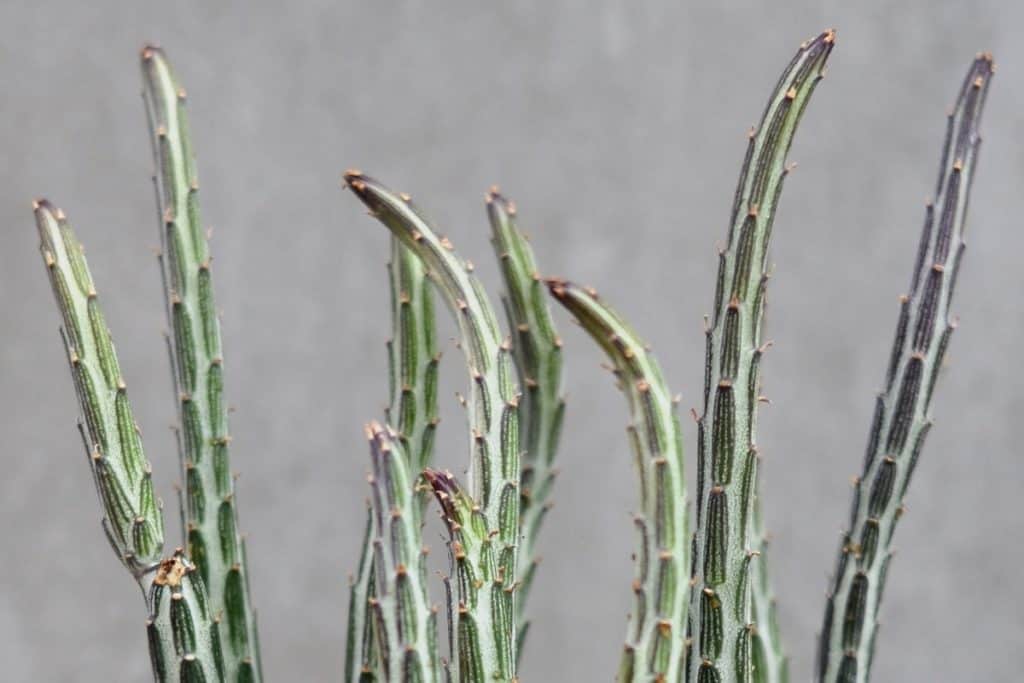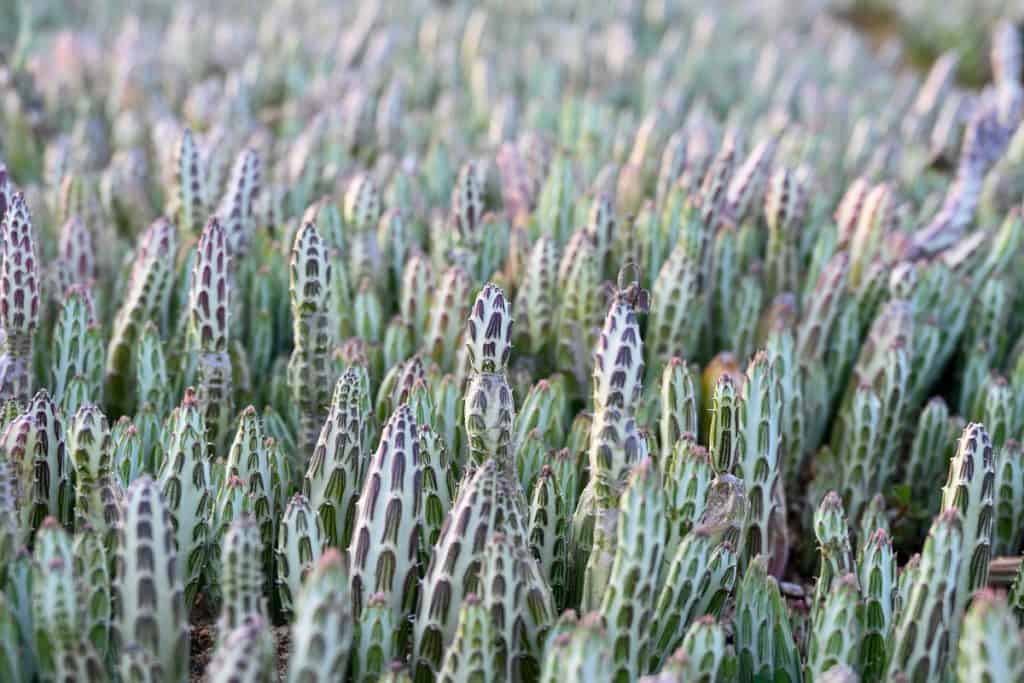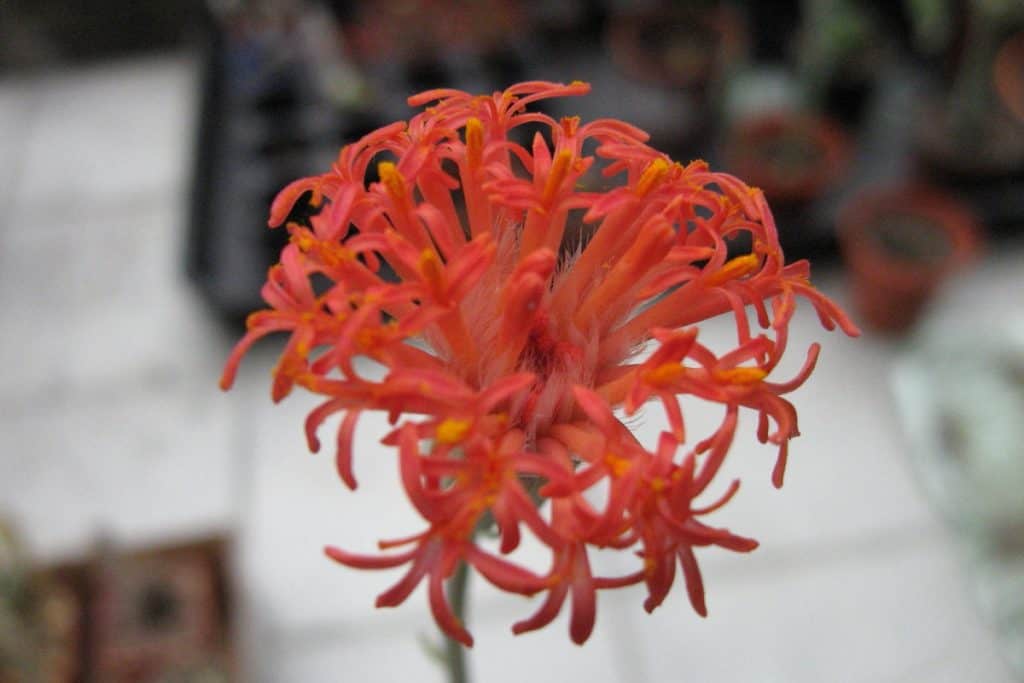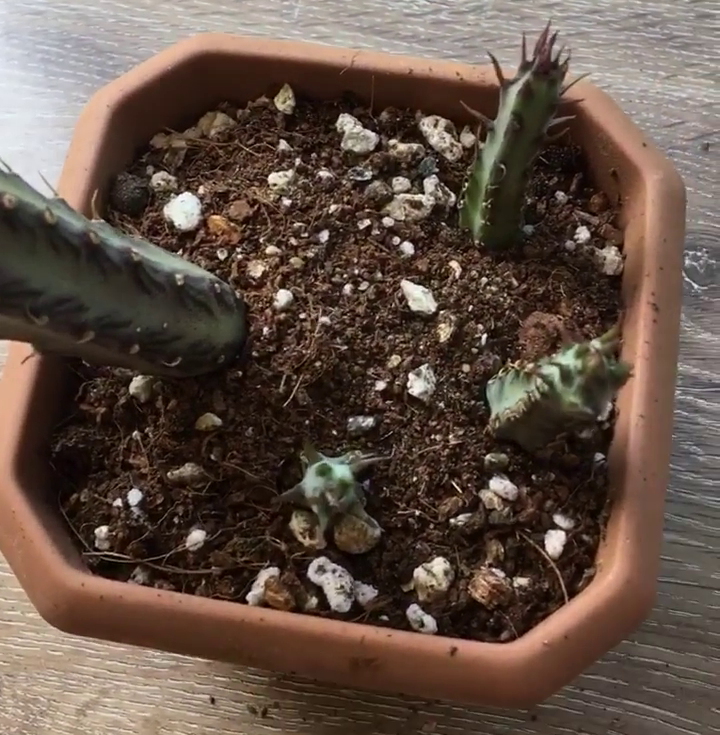Senecio stapeliiformis: Characteristics and Care
Have you ever heard of the Senecio stapeliiformis plant? It’s a super cool succulent that you’ll want to know about! This plant belongs to the Asteraceae family and can be found in the Eastern Cape of South Africa, as well as in Kenya and Tanzania. Some other names for it include Kleinia stapeliiformis, Senecio stapeliaeformis, pickle plant, candle plant, and candle stick.
The reason it’s called a pickle plant is because its stems are striped, cylindrical, and small, and they have spines along the edges. It’s pretty unique! And the best part? In the fall, this plant blooms beautiful reddish-orange flowers on a separate stalk. It’s a real stunner!
If you’re a fan of succulents or just love learning about interesting plants, keep reading to find out more about this fascinating Senecio stapeliiformis plant. You won’t want to miss it!

Related Post:
24 Senecio Lower Classifications [With Pictures]
Contents
Senecio stapeliiformis Care Guide
Senecio stapeliiformis succulents are pretty awesome plants. They’re tough and can be used as ground cover or even grown as larger shrubs. But before you bring one home, it’s important to know what type you’re dealing with. Here’s what you need to know!
Light
Senecio stapeliiformis succulents like bright sunlight, but they can handle indirect light too. If you live in a hot climate, make sure they get bright sunlight. In cooler regions, they need full sunlight, even during winter.
These plants don’t do well with hot or cold drafts, so keep them away from areas with extreme temperatures.
Watering
Watering is a crucial part of caring for Senecio stapeliiformis plants. They’re succulents, which means they can withstand drought. They store water in their leaves, so you don’t want to overdo it. Let the roots dry completely before watering again. If the roots stay wet, they can rot.
The best way to know when to water is to check the moisture in the soil. If the leaves look wrinkled or pruned, it’s time to water. During the growing season, water once a week or every two weeks. In winter, reduce watering to once a month. Just make sure the soil is hydrated but not soaked.
But be careful! Overwatered and underwatered succulents can look similar. Check the leaves and touch the soil to determine if they need more or less water.

Soil
Senecio stapeliiformis plants aren’t picky about soil pH. Just make sure the soil is well-drained and sandy. If you’re using a pot, a cactus mix or fast-draining succulent mix works great.
Fertilizing
These plants do well in sandy soil, but they can benefit from a mild fertilizer between spring and fall. Don’t overdo it, though, as too much fertilizer can lead to leggy growth.
Climate
Senecio stapeliiformis succulents thrive in USDA hardiness zones 9 to 12. They can handle heat, but they’re not fans of cold or dampness. In winter, it’s best to bring them indoors to protect them from the cold.
Pests and Diseases
Watch out for pests like mealybugs and scales. If you spot any, use insecticidal soap or neem oil to treat them.

Pruning
Pruning is mainly done to remove diseased or dead foliage. If you have a taller species, you can prune them to keep the plants compact and firm.
Potting and Repotting
Smaller Senecio stapeliiformis succulents do well in containers with good drainage. Use an unglazed ceramic or terra cotta pot for best results. Repotting is needed when the roots start to come out of the drainage holes, which typically happens every 12 to 18 months.
Propagation

You can propagate Senecio stapeliiformis plants through root cuttings, which are highly efficient. Plant them between autumn and spring, and make sure to let the roots callous before planting. Use a rooting hormone and place them in a container with potting mix. Water them only after you see roots growing.
Taking care of Senecio stapeliiformis succulents can be fun and rewarding. Follow these tips, and you’ll have healthy and thriving plants in no time!
